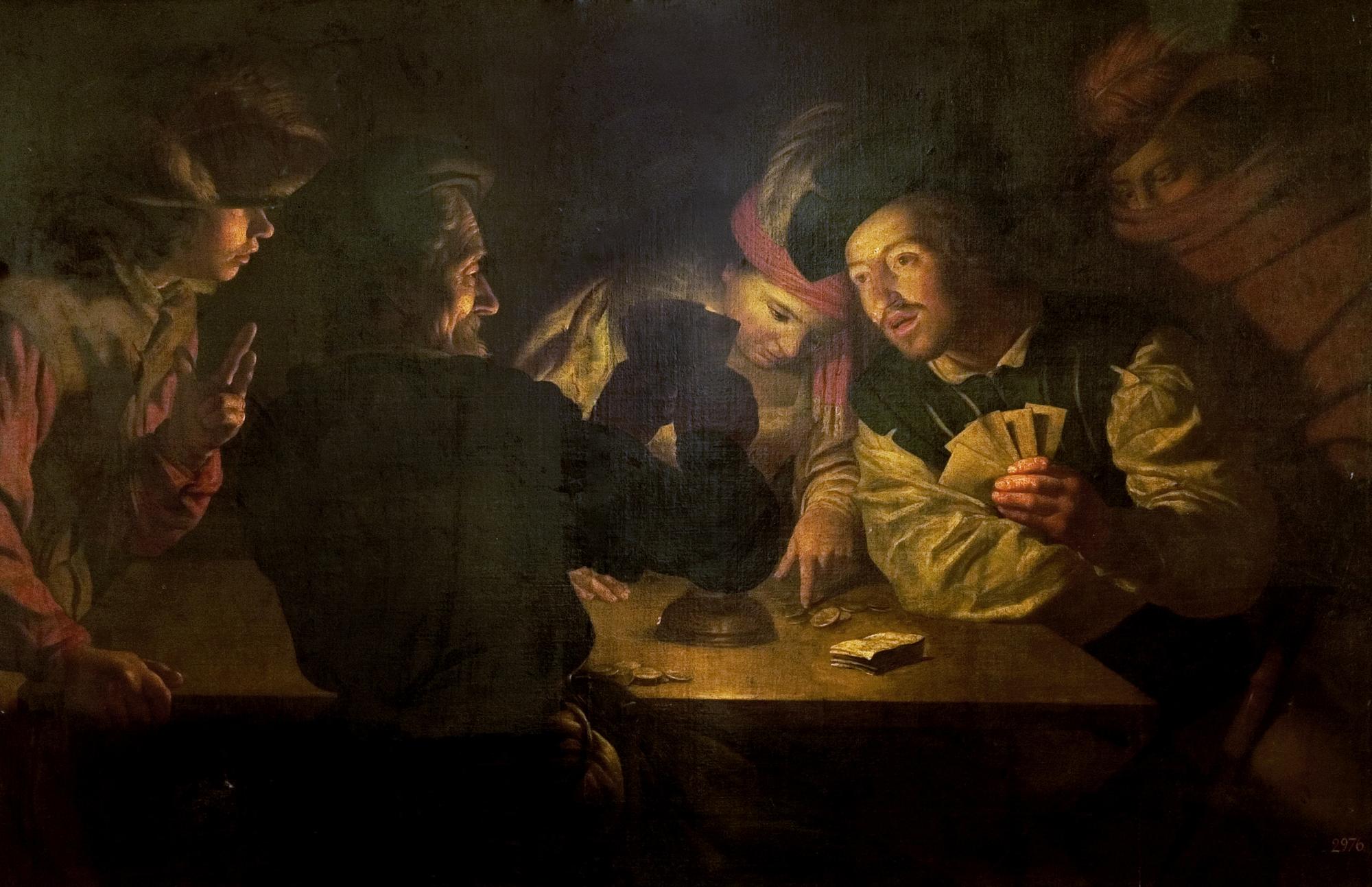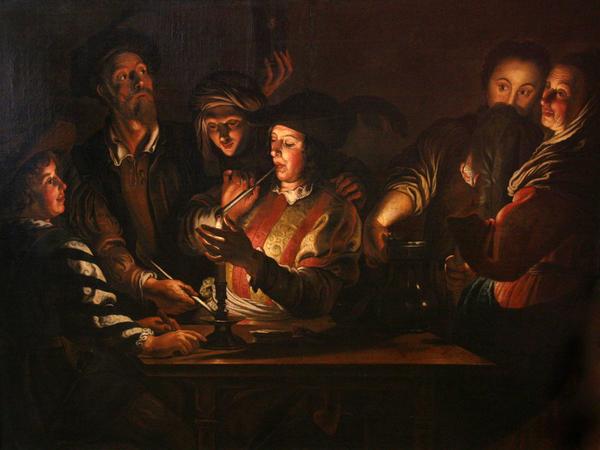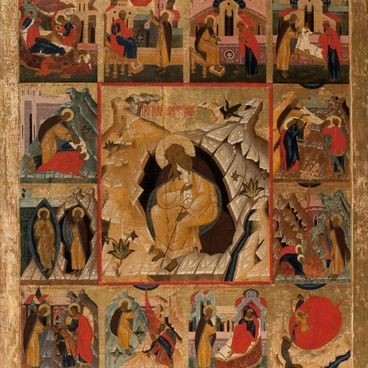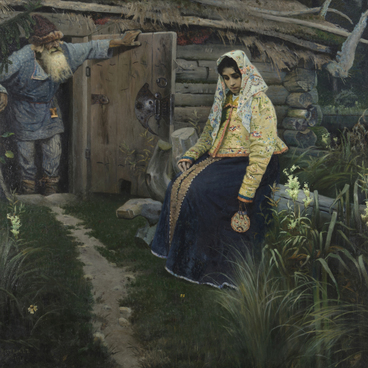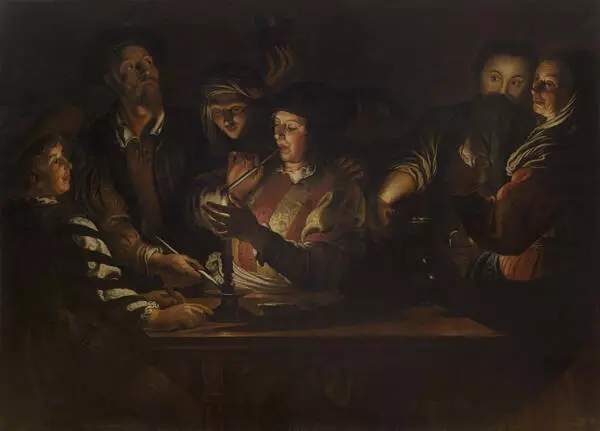Flemish painter Gerard Seghers studied painting in Antwerp. From his young age he proved himself to be a talented artist, and in 1608, at the age of 17, he was accepted into the painters’ guild. From that time onwards he had the right to open his own workshop and take on students.
In 1611 - 1621, Seghers worked at Italy’s and Spain’s royal courts. At that time he was influenced by the work of Italian reformer artist Michelangelo Caravaggio and his followers. The Caravaggisti advocated accurate, detailed treatment of objects and sharp contrasts of light and shadow. Researchers call their principles a precursor to realism in painting.
The Gamblers from the Radischev Museum collection is illustrative of the artist’s early work during the period of his fascination with Caravaggism. He painted the Gamblers in the first quarter of the 17th century. The painting belongs in the early period of the artist’s oeuvre, when he experimented extensively with light effects.
In subsequent years, under the influence of another artist – Peter Paul Rubens – Seghers added more light to his paintings.
In this painting the artist pictures a card game, during which gamblers beat an old man. The cardsharps’ victim is sitting with his back to the viewer, we can only see his profile. One of the gamblers at the table is counting their gain.
On the right-hand side of the painting, the artist features a mysterious figure wrapped in a red cloak. Most likely, it is the moralizer, the character who gives a moral assessment of what is going on in the painting. Through his presence, the author conveys the moralizing idea of his work: gambling was perceived as idleness and a major sin. With his painting Seghers warned the audience against the gambling temptation.
The artist structured the composition in such a way as to give the viewers the feeling that they are inside the painting participating in a game. He painted large, light-colour figures against a dark, almost black background. The only source of light is a candle on the table. Such a sharp contrast of light and shadow gives a dramatic edge to the painting.
Seghers made card playing the subject matter of several of his paintings. One of them is part of Irkutsk Art Museum collection. With that painting the artist draws the audience’s attention to other destructive passions – alcohol drinking, tobacco smoking and adultery.
In 1611 - 1621, Seghers worked at Italy’s and Spain’s royal courts. At that time he was influenced by the work of Italian reformer artist Michelangelo Caravaggio and his followers. The Caravaggisti advocated accurate, detailed treatment of objects and sharp contrasts of light and shadow. Researchers call their principles a precursor to realism in painting.
The Gamblers from the Radischev Museum collection is illustrative of the artist’s early work during the period of his fascination with Caravaggism. He painted the Gamblers in the first quarter of the 17th century. The painting belongs in the early period of the artist’s oeuvre, when he experimented extensively with light effects.
In subsequent years, under the influence of another artist – Peter Paul Rubens – Seghers added more light to his paintings.
In this painting the artist pictures a card game, during which gamblers beat an old man. The cardsharps’ victim is sitting with his back to the viewer, we can only see his profile. One of the gamblers at the table is counting their gain.
On the right-hand side of the painting, the artist features a mysterious figure wrapped in a red cloak. Most likely, it is the moralizer, the character who gives a moral assessment of what is going on in the painting. Through his presence, the author conveys the moralizing idea of his work: gambling was perceived as idleness and a major sin. With his painting Seghers warned the audience against the gambling temptation.
The artist structured the composition in such a way as to give the viewers the feeling that they are inside the painting participating in a game. He painted large, light-colour figures against a dark, almost black background. The only source of light is a candle on the table. Such a sharp contrast of light and shadow gives a dramatic edge to the painting.
Seghers made card playing the subject matter of several of his paintings. One of them is part of Irkutsk Art Museum collection. With that painting the artist draws the audience’s attention to other destructive passions – alcohol drinking, tobacco smoking and adultery.
